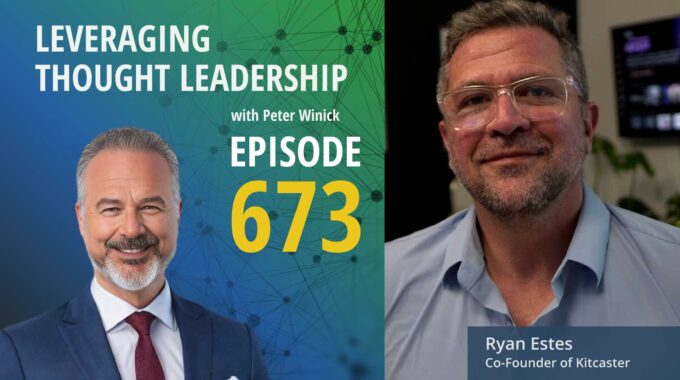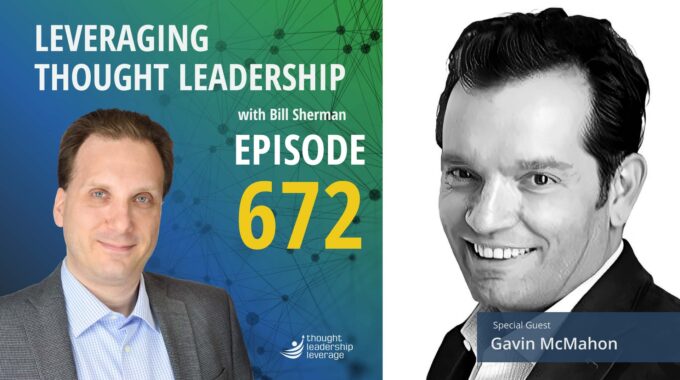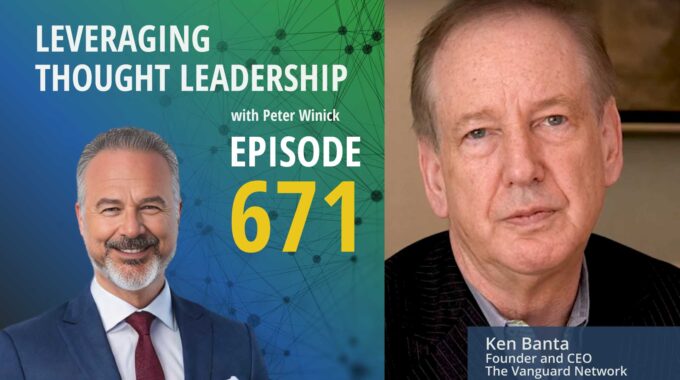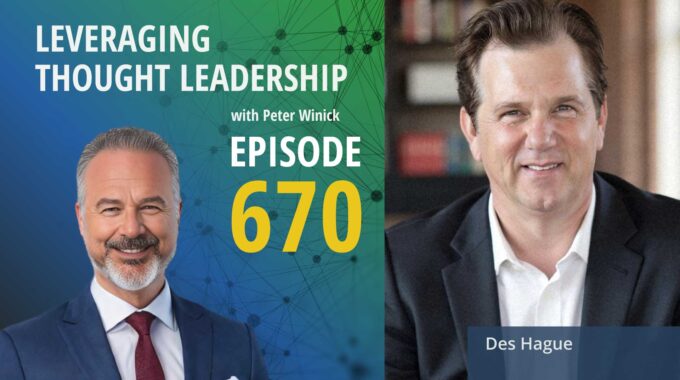Founder-led marketing, podcast strategy, and the art of authentic conversation What makes a podcast truly…
The Evolving Role of Design and Thought Leadership | Charlotte Burgess-Auburn
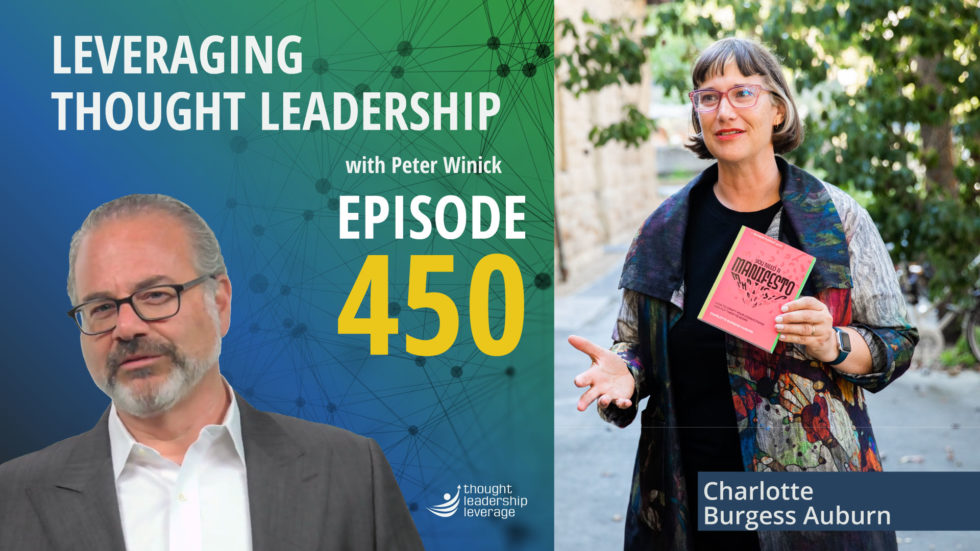
The importance of soft skills to innovation, collaboration and authentic connection with your audience.
An interview with Charlotte Burgess-Auburn about art, design, and the power of thought leadership.
Creativity. Invention. Collaboration. Three skills that are at the heart of design, and the center of great thought leadership.
Many people narrowly define “designing,” whittling it down to simple artistic talent; drawing, painting, or other traditional crafts. But design is a huge world of possibility, covering thousands of mediums and a fantastic variety of skills that drive creativity, spark invention, create authentic connection, and encourage collaboration.
Charlotte Burgess-Auburn is a self-described artist, educator, and extroverted introvert. She’s also the Director of Community at the Stanford d.school, where she teaches the role of self-awareness in creativity and design. Her book, You Need a Manifesto: How to Craft Your Convictions and Put Them to Work, is an essential “how-to” for crafting a guiding document that establishes your intentions, increases your creativity, and helps you maintain focus and conviction as you push toward your goals.
Charlotte’s role as Director of Community started in the very early days of the school’s establishment, and she’s always been a creative force, helping the d.school’s growth. Unlike the typical slower pace of research, the d.school specializes in swift cycles, rapid iteration of design, and innovative thinking. Charlotte discusses that cycle, and shares how her role has evolved from connecting with students, running info sessions, and encouraging the school’s growth, to overseeing a larger group of people who collectively help students learn “thought design skills” that will help them excel when they enter the larger world outside of Stanford.
One of the ways Charlotte explains her role is as “a champion for self-awareness,” helping designers and tech producers understand each other’s function, needs, and dependencies, and work better together. Too many people think of design as a soft, easy-to-master skill – and they’d be wrong! Design thinking shapes goals, builds connection with the audience, and sparks creativity and curiosity. Charlotte shares how she prepares students to deal with difficult critiques, giving them the resources to work with feedback so that both designers and tech creators understand why both sides of the coin are necessary to create a valuable whole.
There’s no substitute for true creativity and invention, and design thinking elevates any craft, moving it from “what gets it done” to “how can we solve problems, drive innovation, and foster collaboration?” That’s the heart of thought leadership, and that’s where Charlotte’s insights shine.
Three Key Takeaways:
- Design skills such as creativity, collaboration, and rapid iteration, are essential to leadership roles. These “soft skills” elevate the game.
- Being comfortable with change and learning how to think on your feet builds the capacity to handle even the toughest challenges.
- Connections and relationships are important – even when they’re outside your field. Learning from those with different skills and interests broadens your understanding, and makes you a better leader.
If you need a strategy to bring your thought leadership to market, Thought Leadership Leverage can assist you! Contact us for more information. In addition, we can help you implement marketing, research, and sales. Let us help you so you can devote yourself to what you do best.

Transcript
Peter Winick And welcome, welcome, welcome. This is Peter Winick. I’m the founder and CEO at Thought Leadership Leverage. And you’re joining us on the podcast, which is Leveraging Thought Leadership. Today, my guest is Charlotte Burgess-Auburn And let me give you her bio real quickly because it’s fascinating. So she’s a designer, an artist and an educator. She’s got a background in production for Fine Arts and theaters and experience at the MIT Media Lab. She’s been the director of community at the Stamford RD School since 2005, where she also teaches classes on the role of self-awareness and creativity and design. She’s born in Rome, Italy, to American and Dutch parents, who were both teachers, and was raised in Massachusetts in a fully academic environment. So before we go to the rest of this, I’m more interested in talking to her. So we’ve cut your bio short to get right to the good stuff.
Charlotte Burgess-Auburn Fantastic. I love it.
Peter Winick Cool. So, welcome aboard.
Charlotte Burgess-Auburn Thanks.
Peter Winick So you’re in the definitely in the academic space, right?
Charlotte Burgess-Auburn Yes.
Peter Winick But it’s more than that. Right. So give us the “what is a day in the life look like”, if that’s a thing?
Charlotte Burgess-Auburn Yeah. I’m something that I like to call at Stanford, I like to call it staff, “staff-ulty.”.
Peter Winick Staff-ulty?
Charlotte Burgess-Auburn Yeah, kind of staff member at Stanford, the director of community at the Stanford d.school. But I’m also a lecturer, so I teach classes as well. And the d.school is full of us. It’s full of people who are both do-ers and teachers. And so it’s not unusual, at all, but – but I enjoy it because it’s it’s gives me a peek at both sides of the of the at least two sides of our of our triangular equation of learners, do-ers and teachers. And I’m always learning no matter what. Yeah.
Peter Winick Yeah.
Charlotte Burgess-Auburn So having my job be doing and teaching is very nice.
Peter Winick Got it. So, you know, so oftentimes when, in my work, because we do a lot of work with, you know, author speakers, thought leaders, academics, etc., academics are a little bit different generally, right? In terms of what do I mean by that? They go really, really deep, right? Their standards are really, really high. Yeah. And I’m not saying this is you, right? The speed at which they sort of operate is a little bit different than standard business speed. Now the D school might be a little bit different, but maybe, does that resonate or am I nuts. Touch on that?
Charlotte Burgess-Auburn Well, I mean, the d.school operates in many ways a lot faster than the rest of Stanford. So we our cycles are pretty quick because our focus is around teaching design to students. And the that cycle is quarter by quarter by quarter. And so we move we move pretty swiftly. Stanford is a research institution, a very large research institution, and research tends to run at a much slower cycle. Thankfully, we don’t really want people to be cranking out their research as fast as possible.
Peter Winick Yeah, right.
Charlotte Burgess-Auburn And so there’s.
Peter Winick No drive through for research, right? That’s not an innovative.
Charlotte Burgess-Auburn Idea, I think. I think it’s a bad idea. So we tend to kind of move a little faster than that then the research part of the Stanford Institution. But at the same time, a lot of the interests and areas of inquiry and the types of content that we are applying design to are coming from faculty at Stanford, students who are studying with faculty at Stanford. And so it’s not I would say our work is not separate from what the rest of Stanford is doing. It’s really just that we are bringing a kind of design lens to to the work that is to be done.
Peter Winick So your title is interesting in terms of director of community, right? So that’s that scaffold piece. So what does that actually mean? What is that?
Charlotte Burgess-Auburn Yeah. Yeah. So it’s funny. Yeah, it’s funny how I feel like I’ve sort of grown into that title. I chose that title on my first day of work at Stanford. I went over with David – David Kelly, and Stuart Campbell, who is the executive director, and we were like, What are we going to call me? And we chose it because I felt like the community angle of it would it would appeal to students. And one of my main tasks for the first five or so years of the existence of that school was just to connect with students and kind of draw them in and get them interested and help them. And then we chose the director side because I needed to be able to get into offices at Stanford to get people to do a few things for me here and there. And if you’re a coordinator or manager, nobody wants to. Right, right, right. Take your call. So I would be like, I’m the director of community. I mean, they just didn’t know that I was like for the first year or so. Like one of, like, two.
Peter Winick One of one. Yeah, yeah, yeah.
Charlotte Burgess-Auburn Okay. But over the, over the years.
Peter Winick I feel like one of the type.
Charlotte Burgess-Auburn Of grown into it. So yeah, yeah.
Peter Winick So, but give me an example. What are the type of things that that entails that falls under your.
Charlotte Burgess-Auburn Yeah. So a lot of what I’ve done in the past, the school is now getting close to 20 years old. It’s not quite but and for beginning archive it’s kind of like startup career. My main job was around community was connecting with students, right? I threw a lot of parties, I did a lot of info sessions, you know, all those kinds of things. I did a lot of mentoring of students and a little bit of career advising, I guess I would call it so.
Peter Winick Kind of a casual. So how has that evolved now? It well, two part question. So I love this sort of the origin story, right. And so not not many people that could be involved in a start up university.
Charlotte Burgess-Auburn Or inside the university.
Peter Winick In the heart of the startup universe. Right? Like, what better place to have a startup university than in the valley? Right. But so how has the role matured and evolved and where is thought leadership part of that evolution?
Charlotte Burgess-Auburn Yeah. So I would say like at this juncture, my job is to kind of oversee a larger group of people who are who collectively we are all working to help students to onboard new design skills and then use them out in the world. And that means like how do we connect our current students with our alumni? How do how do we collect connect our current students and our alumni with organizations that may want to hire them? How do we help students orient and navigate in a incredibly fast paced and changing landscape of work and life?
Peter Winick Hello.
Charlotte Burgess-Auburn Right, right. Right. Yeah. Hello? Hello. I hello. Right. Yeah. Right. Yeah. Change in in the design landscape and in the landscape of almost every type of career really is pretty intense. And so giving them the skills to try and navigate that. And then also the resources to do that. Like part of part of what we do is, is resource based. But yeah, but a lot of what we do is kind of skills based. We’re trying to teach people useful skills to go along with their design skills, their kind of hard design skills. I’m teaching them sort of thought design skills.
Peter Winick Got it. If you’re enjoying this episode of Leveraging Thought Leadership, please make sure to subscribe. If you’d like to help spread the word about our podcast, please leave us a review and share it with your friends. We’re available on Apple Podcasts and on all major listening apps as well as at ThoughtLeadershipLeverage.com/podcasts.
Peter Winick So if you were to think about that through the lens of thought leadership, either yours or some of the universities, what how does that connect? How do those dots come together?
Charlotte Burgess-Auburn I guess what I would say is, I like to be a champion for the role of self-awareness in the skills of design. And it has always been a bit of a I don’t want to say a fight, but like we’ll have to sort of tussle for your for your spot at the table.
Peter Winick So stay there a minute. I was on a call on another issue earlier today with one of the members on the call was a designer at a big tech company. And there was this sense of A, being different. Right. Because when you’re in a tech company, sort of there’s that tech culture and they look at like a designer, like, oh, maybe you’re a second-class citizen or we don’t even know what that is or whatever.
Charlotte Burgess-Auburn Yeah.
Peter Winick And there’s also designers, and this is a generalization, so I’ll give you the caveat there, you know, designers also, you know, when they put their work out, it’s it is more, I believe, an extension of themselves or perceived to be. There may be someone writing a line of code or, you know, an accountant doing a spreadsheet or whatever. How do you how do you get them to deal with that? That that I could give you horrendous feedback on a piece of work that you did a design standpoint, but it doesn’t mean that Charlotte’s a horrible person, right? Right.
Charlotte Burgess-Auburn Yeah. Yeah, exactly. I mean, I think, you know, designers have to get used to people. They both have to get used to people critiquing their work, but they also have to learn how to drive a critique so that they understand both they and their client understand. Right. Like we’re talking about the work right now. We’re talking about the output. We’re not talking about input. But I also think there is this, I wouldn’t call it exactly a stigma, but there’s this sense of perception in within sort of a high technology culture that like design is fuzzy and weird and it can’t be quantified and therefore it’s like not terribly, you know, it’s a little bit less than.
Peter Winick Yeah, but then, but, but then when you, when you, when you unpeel that and say Google for years, part of the beauty of Google was the simplicity of the design of the search bar compared to its competitor 100 years ago with Yahoo! Where you went on their page.
Charlotte Burgess-Auburn Which was like, a disaster.
Peter Winick Things were spinning and flying and like, you know, every designer was like, you know, convulsing when they looked at that. Right. And yeah, you know, if you don’t know Yahoo! Google it. It used to be a thing, but it’s still kind of a thing. But anyway. Right.
Charlotte Burgess-Auburn Exactly. But I guess my job is essentially to advocate for the types of the types of skills that designers use that are not particularly quantifiable but that have a lot to do with what the outcome of their work is. Right. So a sense of awareness of their own interest and their own creativity and curiosity, a kind of that sense of like the quirkiness that ends up with something novel, right? Something actually different.
Peter Winick Yeah. So there is the stereotypical, you know, anytime you see an advertisement or whatever and there’s a room of people, you’re like, Oh, that must be the goofy designer, because they made them with purple glasses or, you know, high tops or like almost.
Charlotte Burgess-Auburn Yeah, right.
Peter Winick Almost like, oh, look, look at me. I’m a designer or whatever. But there is permission to be a bit of the outsider, to be a bit of a contrarian, to be, you know, you might not want a dentist that’s sort of out there and quirky or a pilot, obviously, like there are certain roles where creativity, like, do I want to be on a plane with the world’s most creative pilot? Probably not. Right. Right.
Charlotte Burgess-Auburn Yeah. I mean, I think the D school also really represents the flip side of that, which is that it’s our great belief that everyone is creative and that everyone is a designer and that you do not have to identify as being a designer to do design with that.
Peter Winick But that’s the embracing of design thinking, right? Versus because I have very little creative skills defined traditionally asked me to draw or ask me to do that and back, you know, back of the line. Right. But I could clearly understand, appreciate and use design thinking often, but it’s two very different things, like the underlying principles, the mindsets and all that. I love the fact that I have no creative skills. Is it like, okay, well, whether it’s a birth defect or just that’s not my thing. I’ve got other skills.
Charlotte Burgess-Auburn Yeah, I mean, that also depends on very much on how narrowly defined creative skills. I mean, you’re saying that creative skills are like drawing, but that’s actually just like a tiny sliver of potential. So that’s.
Peter Winick Very true.
Charlotte Burgess-Auburn Right?
Peter Winick Like great creativity could be problem solving. Could be. Yeah. Well, that yeah.
Charlotte Burgess-Auburn Yeah, exactly. And I think that often people will drive themselves down to that kind of narrow point and say, I can’t do that. And by doing it by doing that, they actually cut themselves off from all these other skills that they could acquire and use that are the ones that actually drive creativity. They drive invention, they drive innovation and collaboration. And, and so like, it’s my goal to like, open that up and be like, stop defining creativity like this and start defining it like this so that you can work on this and not worry about that.
Peter Winick Right? So it’s almost the democratization or the inclusiveness of creativity for all cool arts as we start to wrap up here. Charlotte, any, any final words of wisdom? Wisdom to share or thoughts to share with folks?
Charlotte Burgess-Auburn Because yeah, I mean, I have a really cool face. Yeah. I feel, I feel like owning, kind of like owning your own set of values and your own set of creative skills, right? And understanding that you can build those, that you can build your creative skills, and then you can use your values in life to actually help propel you into a more creative place in your work, in your career and your collaborations. Right. Like, don’t be afraid of it.
Peter Winick Yeah, no, I love that. Right.
Charlotte Burgess-Auburn Right. Yeah. Get in there and start working. And it’s, it’s nothing but fun, honestly.
Peter Winick Yeah. No, I love that. Well, thank you so much. I appreciate your time today and coming on board and sharing your story with us. Thanks, Charlotte. Appreciate it.
Charlotte Burgess-Auburn Yeah. You’re welcome. Thanks for having me.
Peter Winick To learn more about Thought Leadership Leverage, please visit our website at ThoughtLeadershipLeverage.com to reach me directly. Feel free to email me at Peter at ThoughtLeadershipLeverage.com and please subscribe to Leveraging Thought Leadership on iTunes or your favorite podcast app to get your weekly episode automatically.


